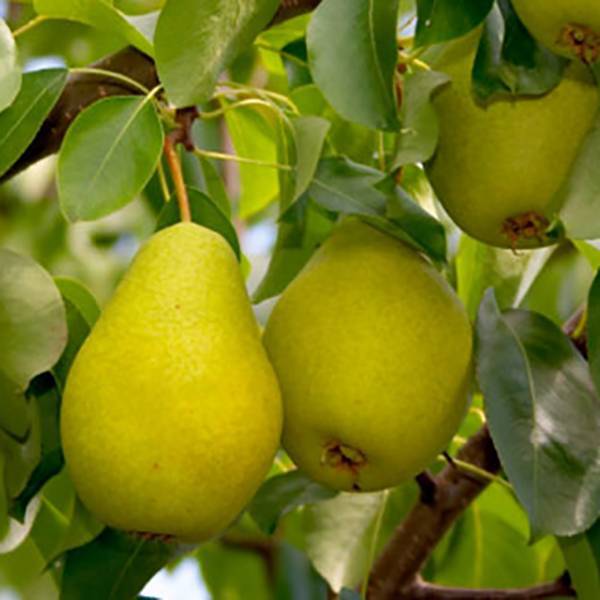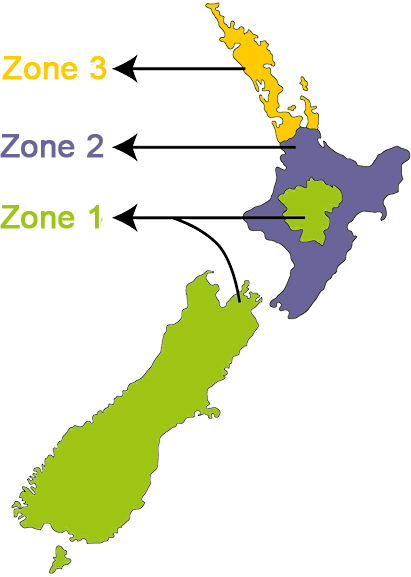
Growing Guide
Full sun. Well drained soil.
10mm
400-600cm2
400-600cm2
800cm2
15cm
Transplant
90-100
730-1460
Plant seeds 15mm deep in soil.
Pear trees grow up to 12m tall, 9m wide.
So be sure to plant seeds this far apart if planting directly into the ground.
However, pear seeds also do well planted indoors before being transplanted outside.
Plant a pear seed into a small container, 15mm deep, or a few in a large container.
Keep the cup in a well-lit area.
The seedlings should be kept in a bright and warm area, like a windowsill, so they can grow.
Remember that the more light a plant gets, the more water the plant will need.
Wait until the seedlings have 4 strong leaves before transplanting to individual pots (if they are in the same pot).
At this point, you can keep seedlings indoors or outdoors depending on the weather.
If there is harsh sunlight, it may be best to keep your plants indoors until they develop further.
If the seedling grows too big for its pot, you can transfer it to a larger pot so you can still move it indoors or outdoors.
Plant the seedling in May or June.
Seedlings should be put in the ground early in the growing season so their roots have time to establish before winter.
Selecting a day in late spring or early summer will give your seedling enough time
At 30cm tall a pear tree is ripe to put in the ground.
Seedlings should be put in the ground early in the growing season so their roots have time to establish before winter.
Selecting a day in late spring or early summer will give your seedling enough time.
Find an area with well-drained soil and 6 hours of sunlight.
Well-drained soil and full sunlight will give your pear the best growing conditions.
When it rains, check the area for standing water on the surface.
If there is puddling, you may want to select a different planting location.
Roots spread over time, so keep that in mind as you select a planting location.
Keep the tree away from important structures or other plants that will need a sufficient amount of water.
Plant trees 7-9m away from each other.
If they are full size they could reach up to 12m tall.
Plant the seedling in May or June.
Seedlings should be put in the ground early in the growing season so their roots have time to establish before winter.
Selecting a day in late spring or early summer will give your seedling enough time
When planting in a pot, choose a dwarf variety of pear.
Choose a pot at least 50cm wide and deep.
Position pot in full sun, and fill with quality potting mix.
Consider placing the pot on wheels if you live in a cold area, so it can be moved to a protected spot during winter.
Dig a hole in the pot twice the size of the root ball.
Remove the shrub from the container, gently tease the roots and cut away any circled or tangled roots.
Position in the hole in the pot and gently backfill, firming down.
Water in well.
Water deeply 2-3 times a week, depending on the weather conditions.
Feed and improve with fertilizer - once in spring, summer and autumn.
When in flower, feed weekly with Plant food to promote flowering and fruiting.
Choose a sunny spot with well-drained soil.
Enrich with fertilizer.
If the soil is clay-based, add gypsum and fork in well.
Dig the planting hole twice as wide, and to the same depth as the root-ball.
Gently tease roots from the container, and position in the hole.
Backfill.
Form a raised ring of soil around the base of the tree, and dig a well around the trunk, so that the mound is shaped like a doughnut.
This allows the water to go to where it's needed.
Water in well.
Mulch around the base but away from the trunk.
Water in deeply.
Feed your citrus three times a year with fertilizer or compost (early spring, summer and autumn).
When the tree starts producing, feed weekly with citrus food.
Feed and improve the soil yearly with fertilizer.
Tying the trunk of the seedling to a wooden stake will help the tree grow straight.
Use two stakes and flexible material wrapped in a figure-8 pattern around the trunk.
When branches break or leaves die, it’s time to prune your tree.
Pruning should be done in the early spring right before the growing season.
Trim off any branches that are diseased or entangled with other branches.
Cut as close to the base of the branch as you can
Pull fruit when it starts to change color while it’s still hard.
It will finish ripening as you store it indoors.
Pick the ripe pear and eat it.
Keep the seeds and wash away the pulp.
Place the seeds on a dry paper towel for a day or two and let them dry out a bit. Place the seeds in a sealable plastic bag with peat moss or sterile potting soil.
Label and date the plastic bag and put the seeds in the refrigerator for four months.
This refrigeration process mimics what would happen in the wild if the seed overwintered in the soil.
Check the seeds periodically and keep them just moist.
After four months you can plant the seeds in a small pot in sterile potting soil 3cm deep.
Place only one seed per pot.
Put the pot(s) in a sunny spot and keep the soil moist.
The seeds should germinate and produce green growth in three months.
After the pear trees grow one foot tall (30 cm.), you can place them in the ground.

Zone 1 - Cool
July , August , September , October
Zone 2 - Temperate
June , July , August , September , October
Zone 3 - Subtropical
May , June , July , August , September